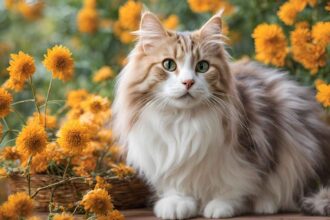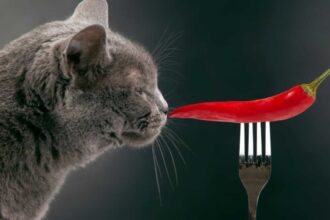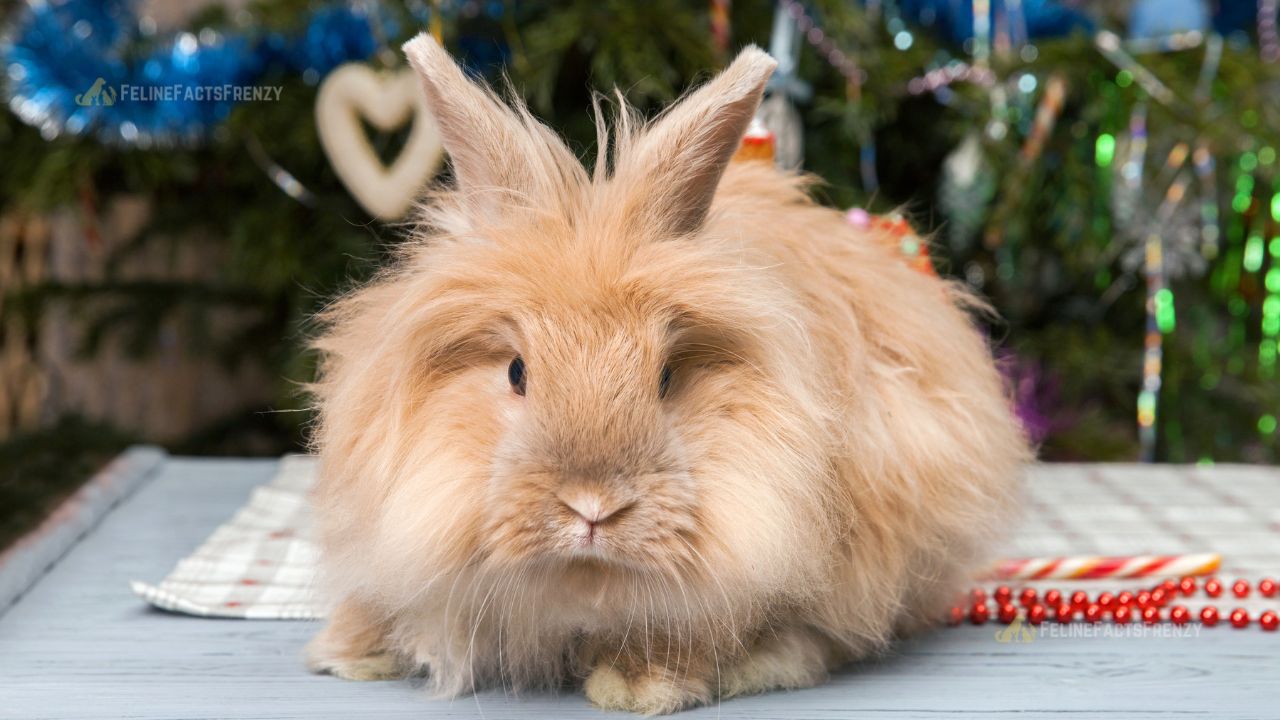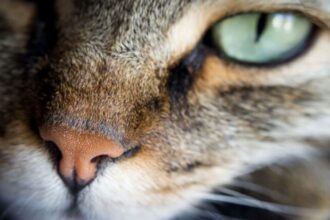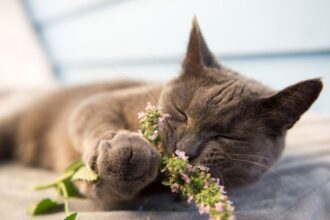The Angora rabbit is among the oldest and most beautiful domestic rabbit breeds. It is famous for its long, soft wool, which is used to make high-quality fiber. These rabbits are gentle and affectionate and require special care due to their thick fur. If you are considering keeping an Angora rabbit as a pet or want to learn more about this breed, this guide will provide all the necessary details.
History of the Angora Rabbit
The Angora rabbit comes from Ankara, Turkey (formerly known as Angora), the same place that gave us Angora goats and Angora cats. These rabbits became popular in France in the early 18th century, especially among the French aristocracy. By the 20th century, Angora rabbits had spread worldwide, and their wool became highly valued in the textile industry. Today, they are raised as pets and for their luxurious wool production.
Physical Characteristics
Angora rabbits are medium to large-sized, with long, silky fur growing continuously. Their wool can grow up to 2.5 to 3 centimeters per month, requiring regular grooming.
- Size & Weight: Depending on the breed, they can weigh between 2 to 5.5 kg (4.4 to 12 pounds).
- Lifespan: Angora rabbits can live 7 to 12 years with proper care.
- Color Varieties: Angora rabbits come in different colors, including white, black, chocolate, gray, and fawn.
Personality and Temperament
Angora rabbits are gentle, friendly, and intelligent. They love human interaction and can be trained to use a litter box. However, they require daily attention to prevent boredom. They enjoy playing with toys, tunnels, and chewable items to entertain themselves.
- They are not aggressive and make excellent pets for families.
- They love cuddles, but their fur needs regular brushing to prevent matting.
- They can be timid, so early socialization is important.
Types of Angora Rabbits
There are several breeds of Angora rabbits, each with unique traits. The four main types are:
1. English Angora
- The smallest of all Angoras, weighing 2.0 – 3.5 kg (4.4 – 7.7 pounds).
- Has a round face covered in wool, making it look like a fluffy ball.
- Requires the most grooming because of its dense fur.
2. French Angora
- Weighs 3.5 – 4.5 kg (7.7 – 9.9 pounds).
- Has thick, soft wool but a clean face and front feet.
- Less grooming is required compared to English Angoras.
3. Giant Angora
- The largest breed, weighing 5.5 kg (12 pounds) or more.
- Produces the highest amount of wool.
- Needs shearing every few months instead of brushing.
4. Satin Angora
- Weighs 3.0 – 4.5 kg (6.6 – 9.9 pounds).
- Has shiny, silky fur with a unique sheen.
- Produces less wool than other Angora breeds.
Housing and Environment
Angora rabbits can live indoors or outdoors, but they need a clean, safe, and comfortable environment.
Indoor Housing:
- A large wire-bottomed cage or playpen with soft bedding.
- Space to hop around and exercise.
- A litter box for easy cleaning.
Outdoor Housing:
- A secure hutch with good ventilation.
- Protection from rain, extreme temperatures, and predators.
- Access to grass and a shaded area.
Diet and Nutrition
A balanced diet is crucial for an Angora rabbit’s health. Their main diet includes:
- Hay (80-90%) – Essential for digestion and preventing wool block.
- Pellets (5-10%) – Special rabbit food with fiber and nutrients.
- Vegetables (5-10%) – Carrots, spinach, kale, and lettuce (avoid iceberg lettuce).
- Fruits (Occasionally) – Apples, bananas, and berries (as treats).
Avoid high-sugar foods and processed snacks. Fresh water should always be available.
Grooming Needs
Grooming is the most important part of Angora rabbit care. Their fur is prone to tangling and matting.
- Brushing: Use a soft-bristle brush 2-3 times a week (daily for English Angoras).
- Shearing: Trim their wool every 3-4 months to prevent overheating.
- Bathing: Avoid bathing as it can stress them; use a damp cloth for cleaning.
- Nail Trimming: Trim nails every 4-6 weeks to prevent injury.
Common Health Problems
Angora rabbits are healthy animals, but they are prone to some conditions:
1. Wool Block
- Happens when rabbits swallow too much fur while grooming.
- Symptoms: Loss of appetite, small droppings, lethargy.
- Prevention: Regular brushing and a high-fiber diet.
2. Wool Mites
- Small parasites that cause itching, dandruff, and hair loss.
- Treatment: A vet-prescribed treatment and regular grooming.
3. Overgrown Teeth
- Rabbit teeth grow continuously and must be worn down.
- Provide chew toys and hay to prevent dental problems.
Breeding and Reproduction
Angora rabbits reach breeding age at 5-7 months. A female rabbit (doe) gives birth to 4-10 kits after a 30-day pregnancy. Baby rabbits are born hairless and blind and need their mother’s care for the first few weeks.
Breeding Angoras requires responsibility since they need extra care and grooming.
Angora Wool Production
Angora wool is soft, warm, and lightweight. Each rabbit can produce 200-400 grams of wool every 3-4 months. The wool is used for knitting, weaving, and luxury textiles.
Wool is collected through:
- Plucking (for English Angoras) – Removing loose fur by hand.
- Shearing (for other breeds) – Trimming the wool with scissors.
Training and Socialization
Angora rabbits can be trained to:
- Use a litter box.
- Respond to their name.
- Follow basic commands (like coming when called).
Socializing them from a young age makes them more comfortable with handling.
Common Myths and Misconceptions
❌ Angora rabbits do not shed – They do shed, but their fur needs to be collected through grooming.
❌ They are high-maintenance pets – They need extra care, but with a routine, it is manageable.
❌ All Angoras produce the same wool – Different breeds have different wool qualities.
Frequently Asked Questions (FAQs)
1. Are Angora rabbits good pets?
Yes! They are gentle and friendly and can bond well with their owners.
2. How often should I groom an Angora rabbit?
At least 2-3 times a week, or daily for English Angoras.
3. Can Angora rabbits live outside?
Yes, but they need shelter from bad weather and predators.
4. Do Angora rabbits like to be held?
Some do, but they must be handled gently and with care.
5. How much wool does an Angora rabbit produce?
Each rabbit produces about 200-400 grams of wool every 3-4 months.
Conclusion
Angora rabbits are wonderful pets for those willing to dedicate time to their care. With proper grooming, a healthy diet, and lots of love, these fluffy rabbits can live a long, happy life. If you’re thinking about adopting one, be ready to enjoy a soft, cuddly, and loving companion!



